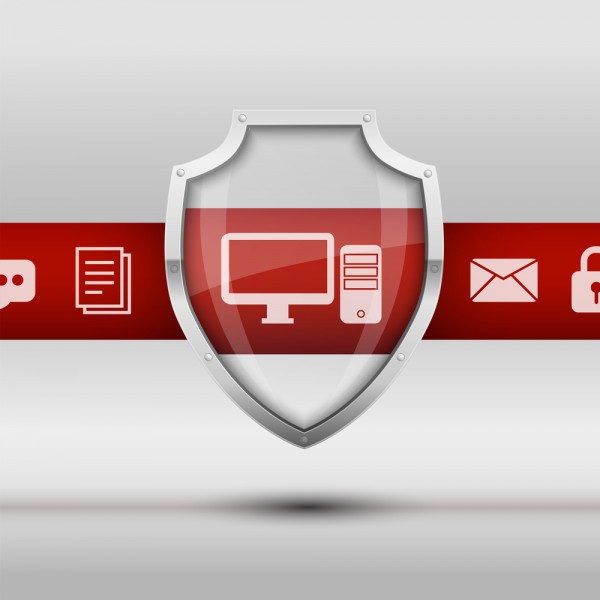
Why cloud security is more important than ever
In today’s modern, digitized world, persuading organizations to move to the cloud is like pushing against an open door. The business case for cloud is clear -- flexibility, agility, and cost savings. Likewise, cloud technology makes scaling faster, smarter, and more affordable than on-premise servers. No wonder 90 percent of companies are in the cloud. This confirms that cloud usage was already mainstream in 2019; this has increased exponentially in 2020.
Operating in the cloud undoubtedly delivers significant advantages and likewise security improvements for most organizations, but with the increasing number of data breaches and cyber attacks, organizations do need to be more cognizant of what cloud security they have put in place.

Could your business benefit from a cloud backup solution?
The average cost of downtime has been estimated at £193K per hour, so every minute counts if your systems are down or your data has been compromised. Data loss and security breaches are becoming increasingly common events in today’s world. It is not a matter of when, but if a disaster of any kind will happen. All of an organization's information must be protected and readily available at all times in order for a business to survive. Considering this fact, the importance of backups cannot be overestimated and backing up vital data is an integral part of any business’s IT strategy.
Ensuring effective off-site backup solutions is essential to any business, whether large or small. If an organization's backups are not well-managed, comprehensive disaster recovery becomes difficult, if not impossible. Business interruptions happen. It’s how you respond that is important to your bottom line.

Zero Trust Network Access: Bringing trust to BYOD and remote work
Productivity and security can pull enterprises in different directions. Especially in the age of remote work when IT decisions are largely being dictated by the needs of a dispersed workforce. Let’s not forget, that remote work isn’t about an employee in a satellite office equipped with on-premise security infrastructure.
Remote work is about end users who work whenever, wherever, and from any device they choose. While this model has great productivity benefits, it’s placing IT and security teams on the backfoot and forcing them to protect business critical data in more places than ever before.

Bouncing back: Disaster recovery and data protection during a pandemic
Even organizations with solid disaster recovery (DR) and data protection plans in place now need to re-visit their strategies due to the significant changes levied by COVID-19. However, the fact is, most companies were unprepared to begin with, and data protection and DR -- already a tricky proposition -- became even more difficult and complex during the pandemic.
Overnight, companies of all sizes went remote. Initially, IT handed out laptops to staff as they left the building or relied on employee-owned devices. Many users connected to the corporate server via virtual private network (VPN), which were complex for IT to manage, difficult to provision, hard to scale and often providing poor performance.

Increasing telecom control: Breaking down the BYOC model for enterprise deployments
The continued shift from traditional hardware systems to SaaS-based cloud offerings extends across departments, industries and organizations of all sizes. As developers and IT teams are tasked with overseeing the cloud migration strategy for their organization, there will be a continued spike in modern telecom services that provide developers control over how they deploy new capabilities across existing systems.
Shifting away from legacy carriers and embracing agile cloud-based communication service providers (CSPs) equips businesses with enhanced control over their telecom resources, as well as the flexibility to easily scale solutions up or down based on customer and market demands. In 2020, businesses’ resilience is being tested, as they are navigating changing operation requirements and the unknown economic future.

Microsoft Ignite 2020: Exciting collaboration-focused highlights
Ignite 2020, Microsoft’s largest event of the year, was delivered as a digital experience this year. Aligned with COVID-19 responses across the world, Microsoft used this far-reaching platform as an ideal opportunity to showcase new and upcoming Microsoft technologies, which will directly enable organizations to meet the challenges of a changing world and rebuild for a better future.
Echoing CEO Satya Nadella’s opening keynote remarks focused on Microsoft’s defined emphasis on response, recovery and resilience in the face of the global pandemic, the company stands poised to pave the path forward for true digital transformation. Emphasizing customer engagement and optimized operations to meet the ever-changing landscape of our "new normal," Ignite 2020 highlighted newly updated and improved tools geared toward the new hybrid working normal, ever-increasing virtual landscapes and collaboration for both face-to-face and remote teams as key components to organizations’ success in the immediate future.

O&O DiskImage 16 Professional adds new RecoveryPartition to save you from disaster
We all know the importance of backing up our computers, and we are increasingly coming around to the idea of actually doing so. The problem is that preparation is needed. If something goes seriously wrong with your system and you want to restore everything from a backup, what happens if you cannot boot into Windows and you've not created bootable recovery media?
With the release of DiskImage 16 Professional, O&O Software has a solution. The addition of DiskImage RecoveryPartition to the application means that even when the worst-case scenario occurs, the recovery media you need is already available on your hard drive.

Deploying facial recognition in retail stores: How tech benefits consumers and brands
2020 has been nothing short of challenging for businesses and people alike across the globe. Although nearly every company has felt a blow to economic forecasts, they are now pivoting strategies in order to return profitability to the bottom line.
But there is a shining light for retail at the end of the year. The upcoming holiday shopping season has traditionally been a huge source of revenue as consumers have historically spent, individually, upwards of $1,000 each year -- summing up to a total of billions of dollars spent each week from Thanksgiving through Christmas. However, with the pandemic continuing to change traditional consumer shopping behaviors, and local legislation differing across the country as to when stores can have any or full capacity, this year’s holiday shopping season will also look drastically different. In order to turn a profit, retailers need to adapt to the new reality and ensure that the in-store experience is as safe and efficient as possible.

The new-look IObit Advanced SystemCare 14 can optimize your system using AI
IObit Advanced SystemCare is back with a big update that brings not only a new look, but also a number of new and improved tools, and also the addition of AI to automate the optimization of your computer.
The updated look is what you'll notice first about IObit Advanced SystemCare 14, but the latest version is about much more than a fresh coat of paint. As ever, there is a free version and a paid-for professional edition, and this time around the powerful Internet Boost tool is available to users of the free version.

How to download the Windows 10 October 2020 Update (20H2) ISO right now
After months of testing with Insiders, Microsoft has finally released the latest big upgrade for Windows 10. Known variously as Windows 10 October 2020 Update and Windows 10 20H2, the update brings some important and exciting changes to Microsoft's famous operating system.
As is usually the case, Microsoft is performing a staggered rollout which means most people checking Windows Update won't see the update for a number of weeks. But if you want to get up to date right away, you can download the Window 10 October 2020 Update / 20H2 ISO and install it immediately. Here's what you need to know.

Why the concept of 'single pane of glass' in cybersecurity is a myth
As we approach 2021, there’s a new technology revolution underway. Yes, software is king -- but our data is siloed in applications. In order to achieve the next rung of technology innovation, we must take a Data-Centric and API-first approach to software development to allow for better connections between your ecosystems of tools.
The breed of software solutions that emerge in this coming decade will disabuse themselves of the dreaded, empty promise of the 'single pane of glass'. They will prioritize development for the API and reduce the reliance on UI for data management.

5 ways AI is improving healthcare post-COVID
COVID-19 has highlighted the need for change in the healthcare industry. When the pandemic eventually subsides, medical systems will emerge with the knowledge of where they need to improve. AI in healthcare can and will address many of these issues.
Medical AI is nothing new, with 89 percent of healthcare executives reporting that AI is already helping them. Now that healthcare improvement is a more prominent issue, the adoption of this tech will only increase. The post-COVID medical world will rely on these technologies. Here are five ways healthcare organizations will use AI to improve after the pandemic.

How to stay connected in the no-touch world of software sales
While the pandemic disrupted business, the great remote migration made believers out of many decision-makers. Despite having to implement sweeping changes very quickly, the long touted benefits of remote working proved real and it’s obvious many aspects will remain in place for good.
Software companies already had employees who were quite familiar with working remote and maintaining productivity. Yet, while these companies were generally in a better position to adapt to the "new normal," their sales teams were impacted just like those in any other industry -- perhaps even worse. After all, they deal with complex technology that traditionally has required a lot of face-to-face time to educate prospects. No-touch software sales is tricky business, particularly when prospects are accustomed to hands-on experiences and trials. That said, software companies need to rethink their strategies and procedures.

Revelations: Enterprise architecture in the wake of COVID-19
When COVID-19 unexpectedly shut down the country, enterprises were hit hard. Millions of workers went remote almost instantly. In the months since, we’ve learned a lot about our networks and how they respond to various stressors. With Google, Facebook and others announcing that employees won’t return to campus until at least July 2021, and as companies like Twitter and Square debut new policies that allow any employee to work from home permanently, post-pandemic, it is clear that remote work will be a fixture in business for some time to come. As such, issues in endpoint management will need to be addressed in order for networks to run efficiently.
To understand what’s happening with infrastructure today and how COVID-19 is prompting long-term changes, it’s important to first understand the past.

Microsoft pushes out Edge 86 with download improvements, PDF enhancements and more
Microsoft has released the latest version of its Chromium-based web browser. Edge 86 is packed full of not only the usual raft of bug fixes and performance improvements, but also a host of new features.
This version of the browser sees the arrival of Secure DNS (DNS-over-HTTPS) support, as well as numerous improvements to PDF handling. Support for tables of contents aids document navigation, while pen support for highlighting and enhanced scrolling will be welcomed by many. Other improvements and additions include site testing in Internet Explorer mode.

